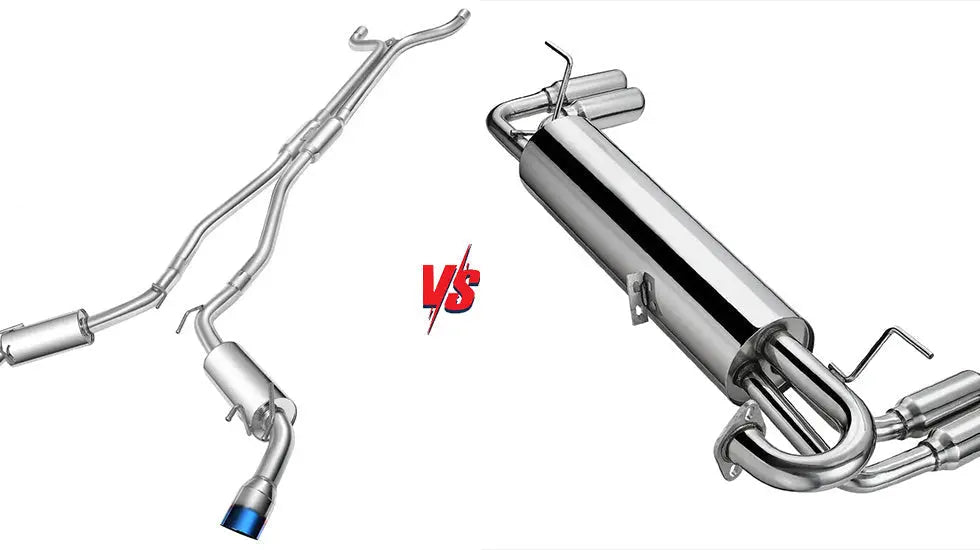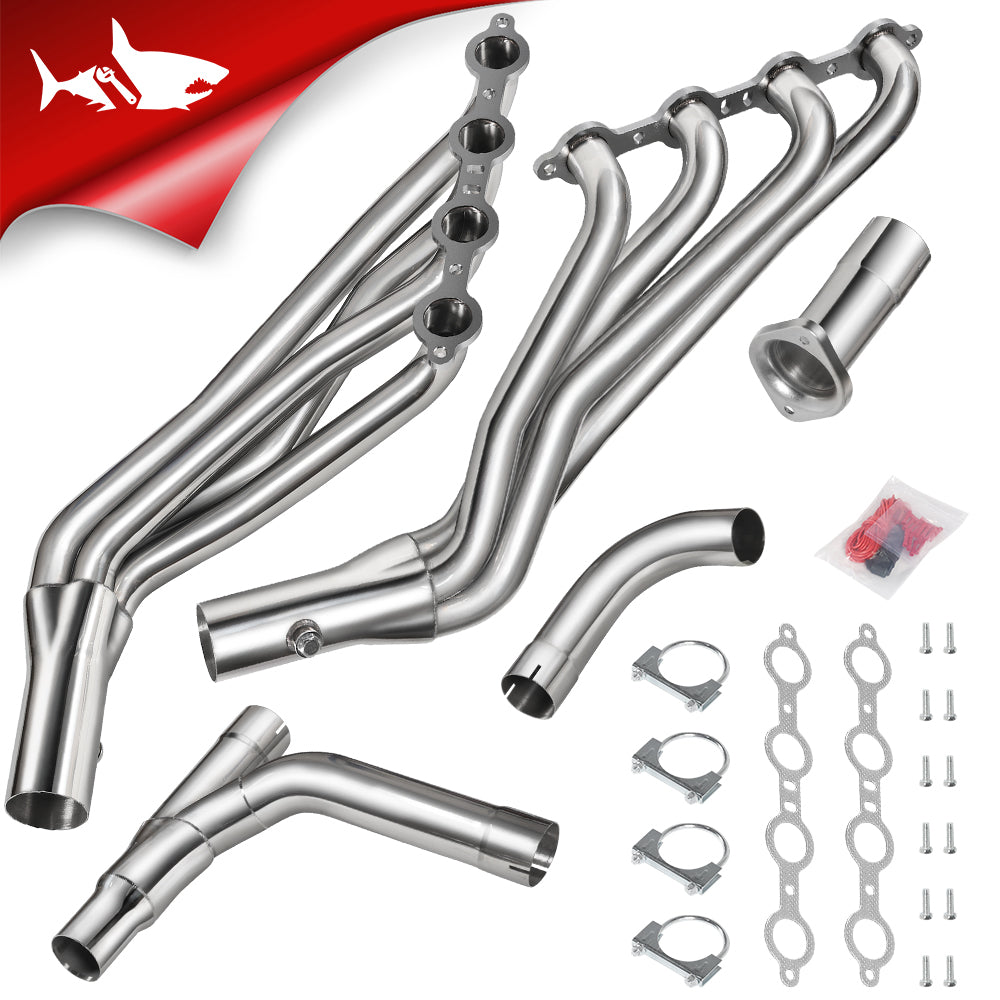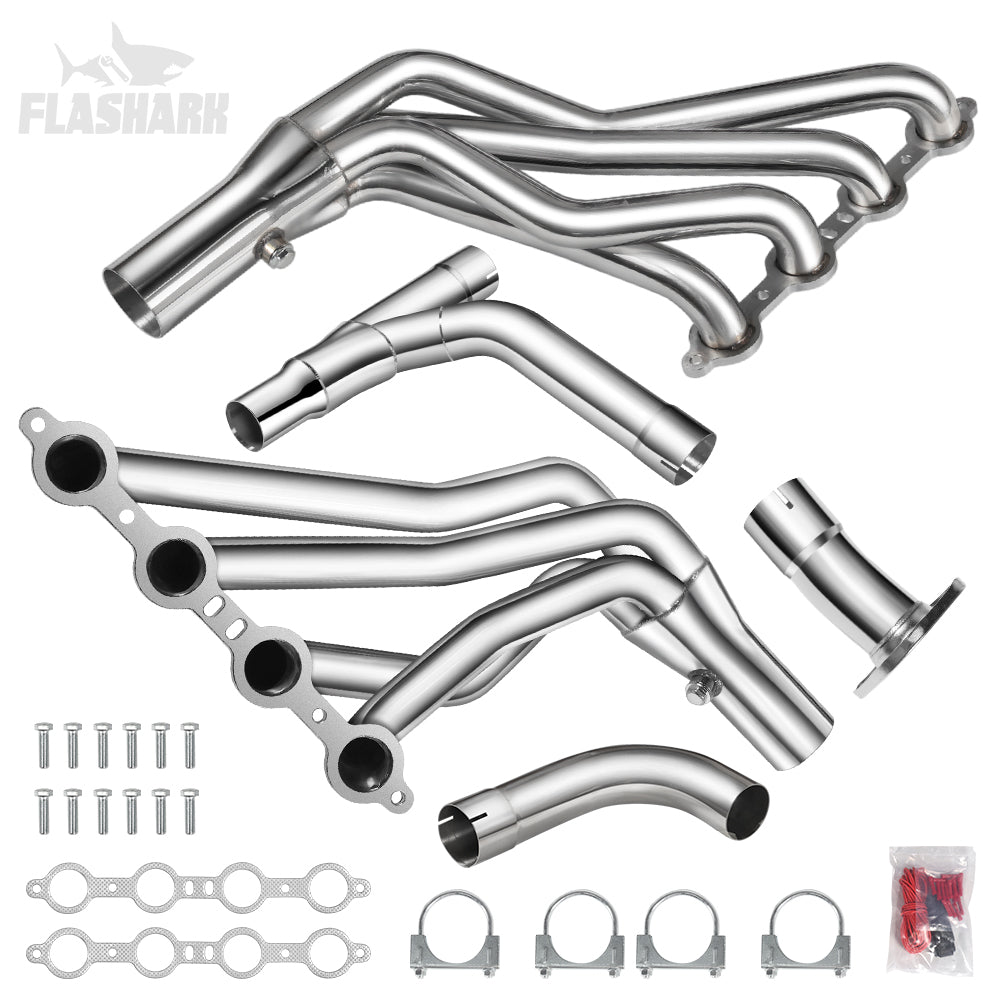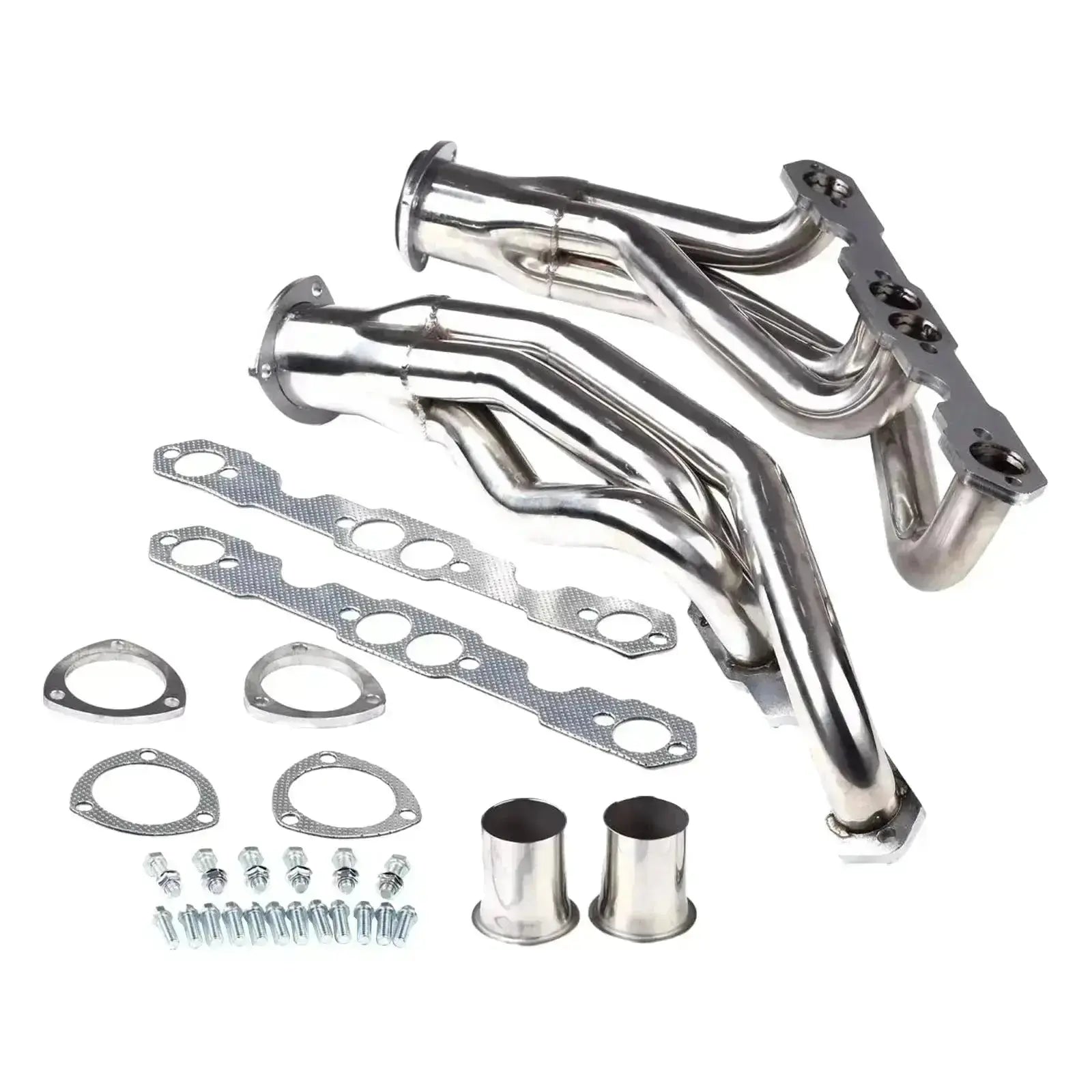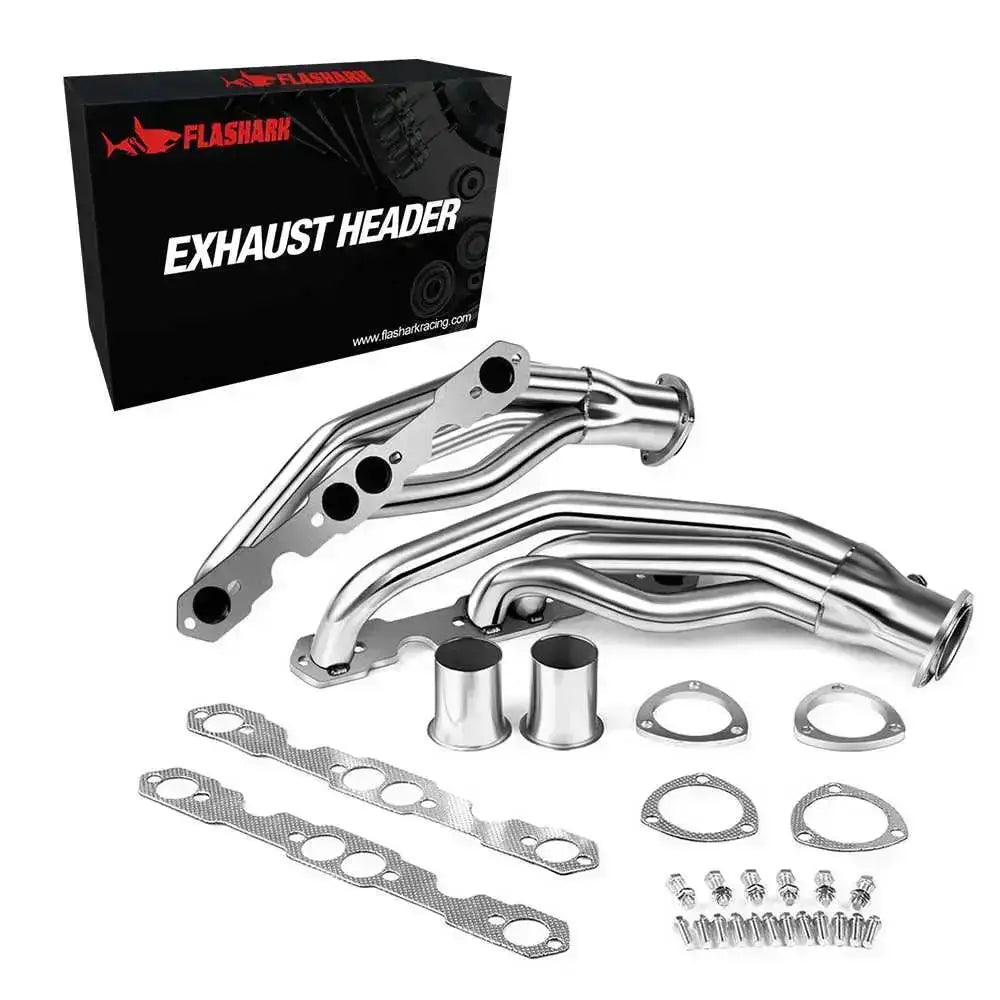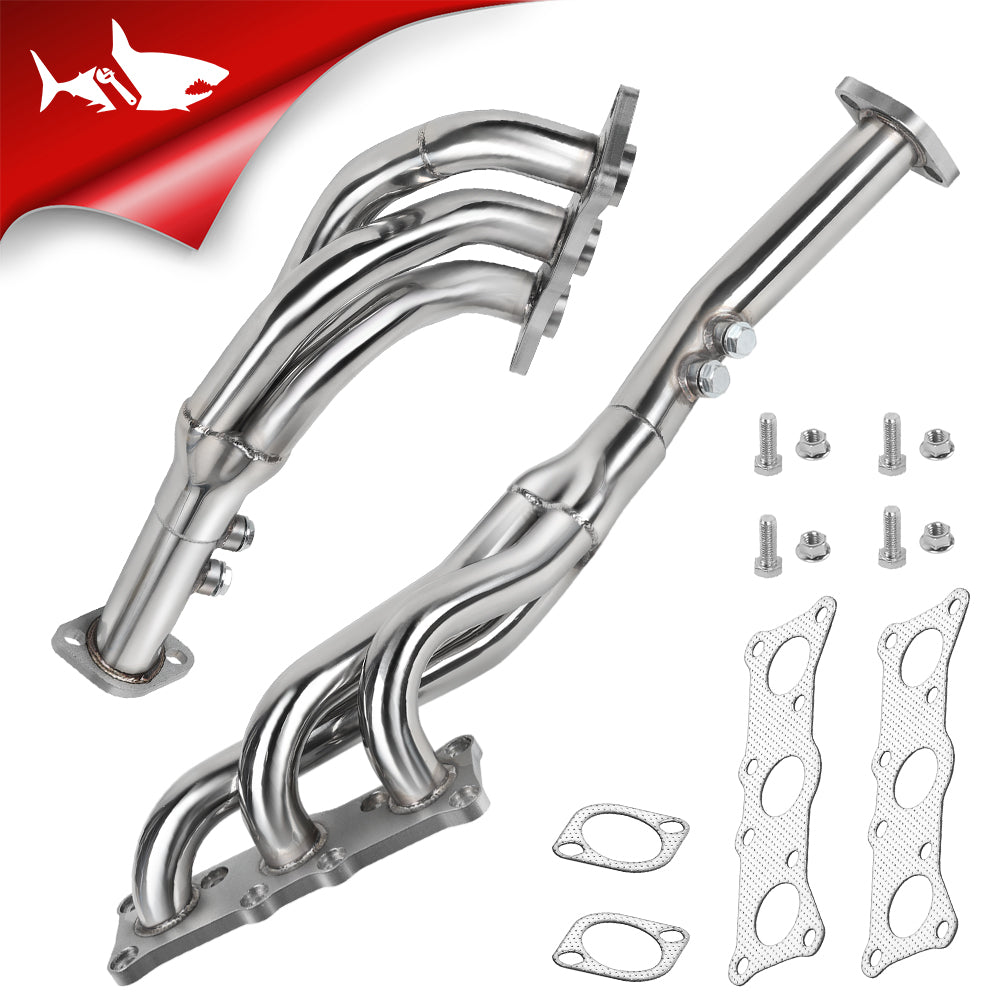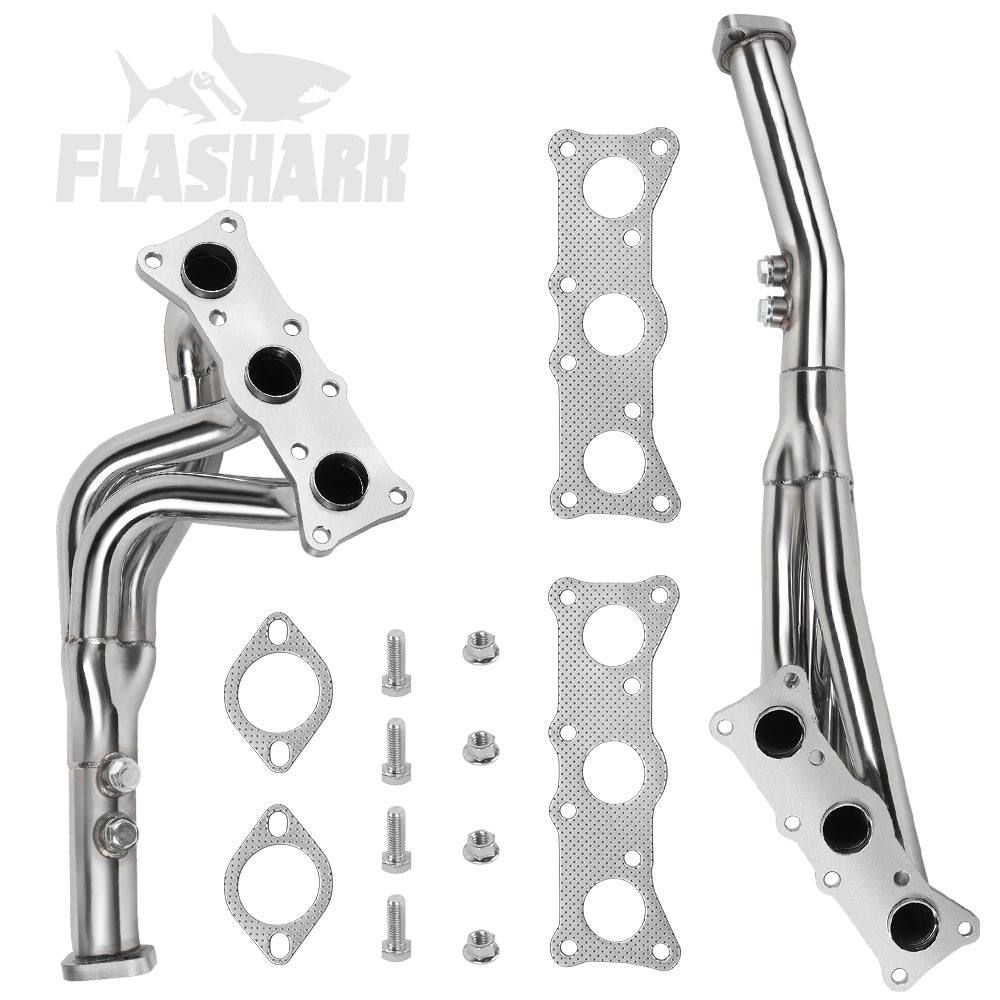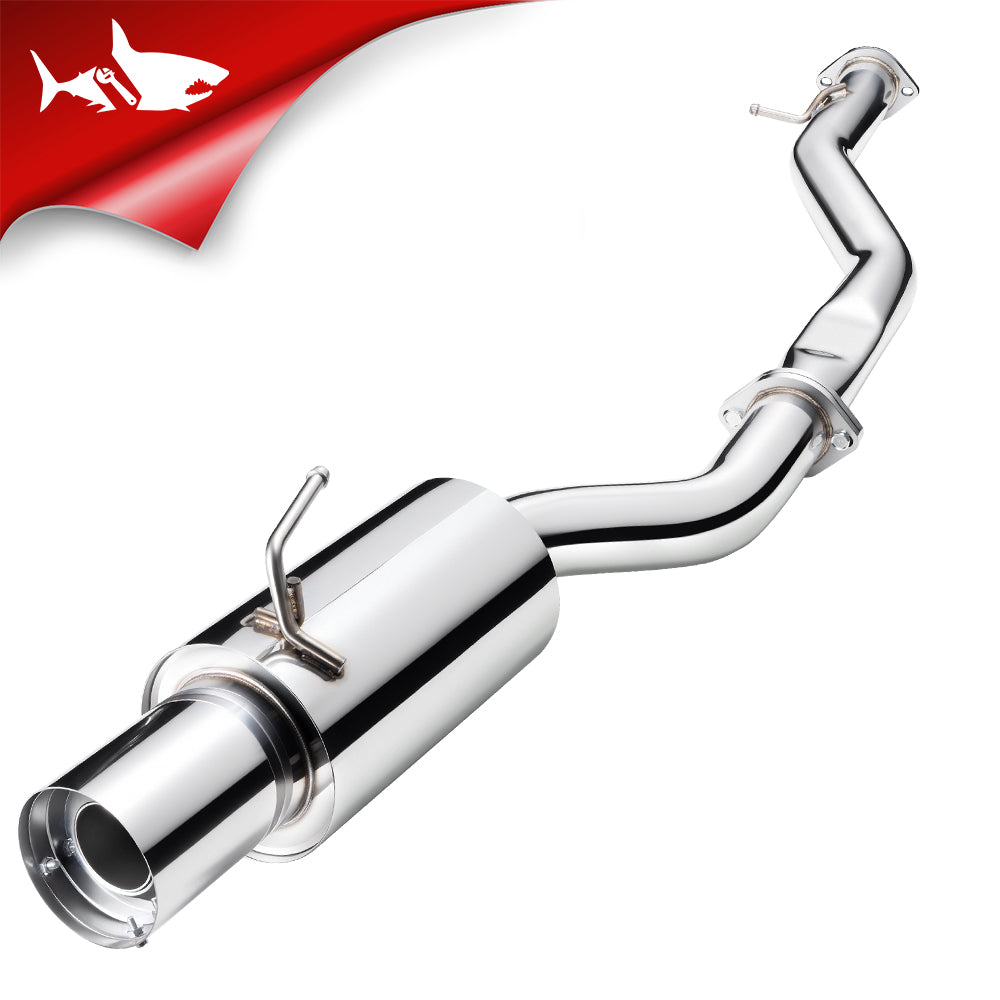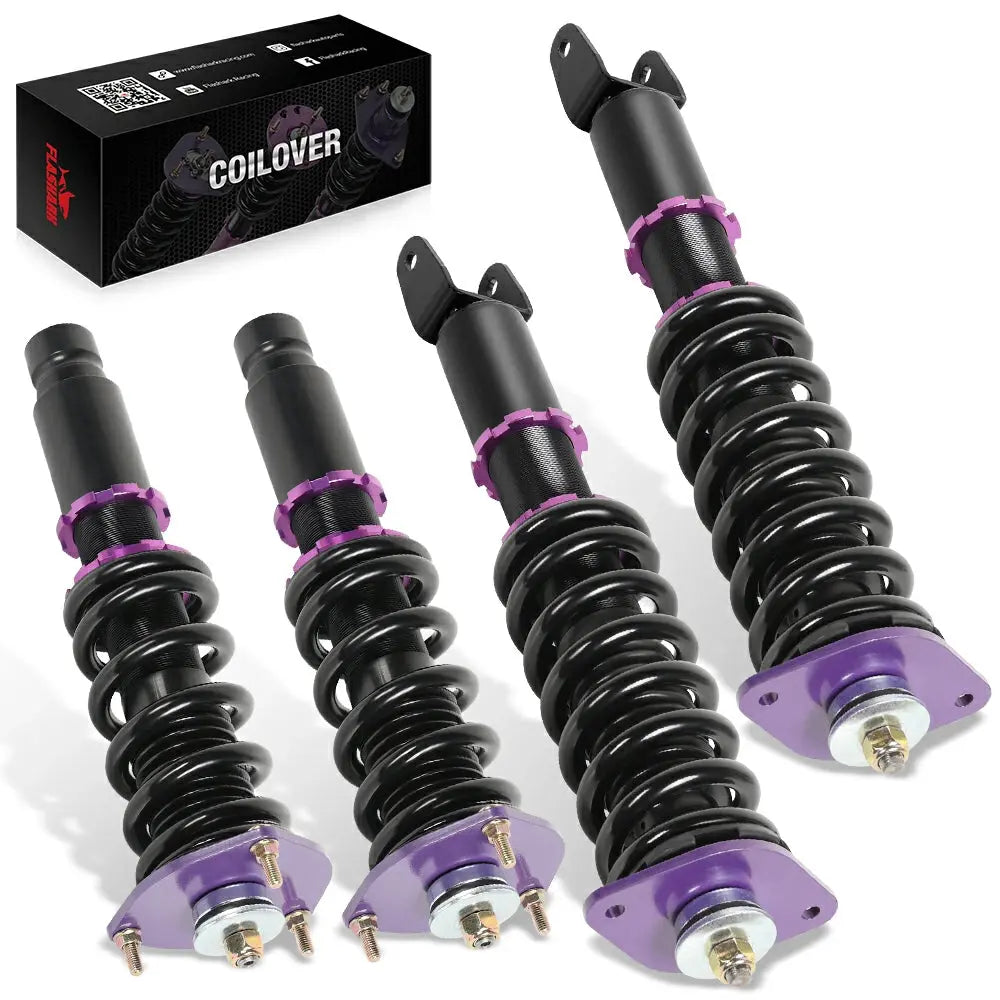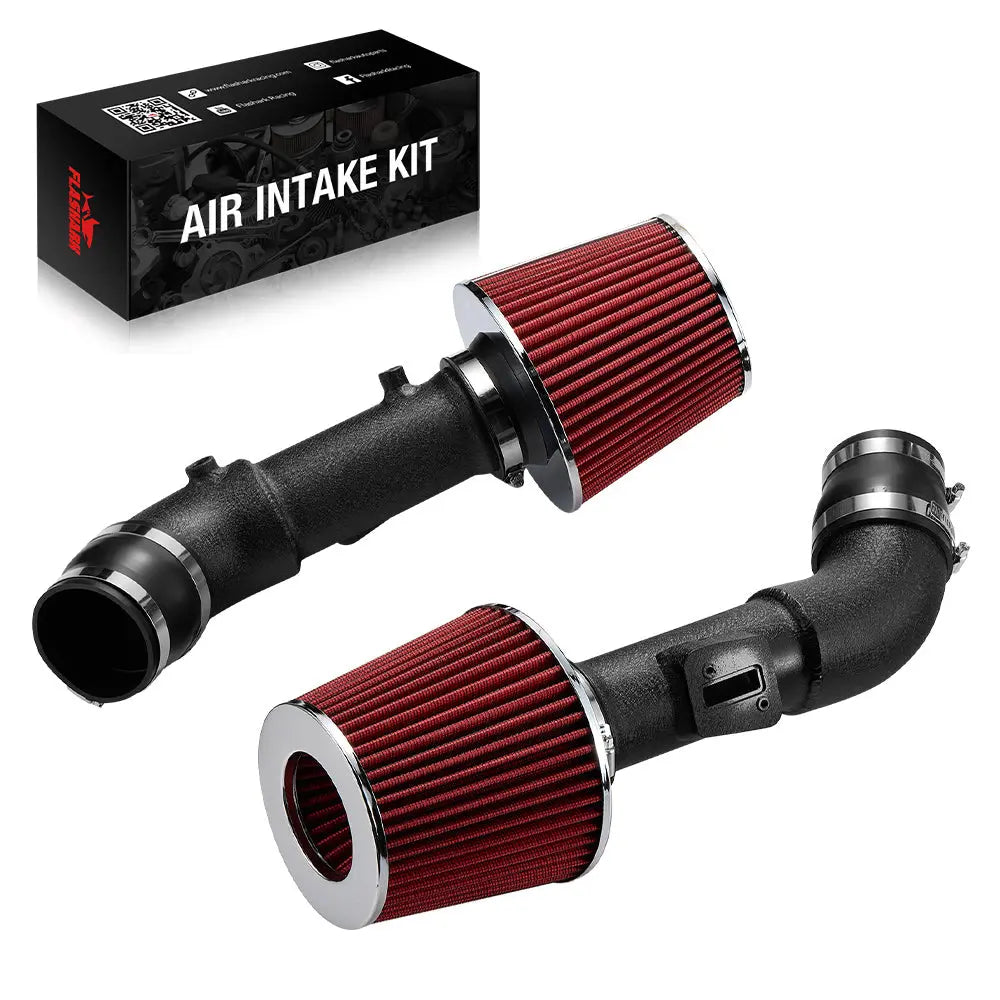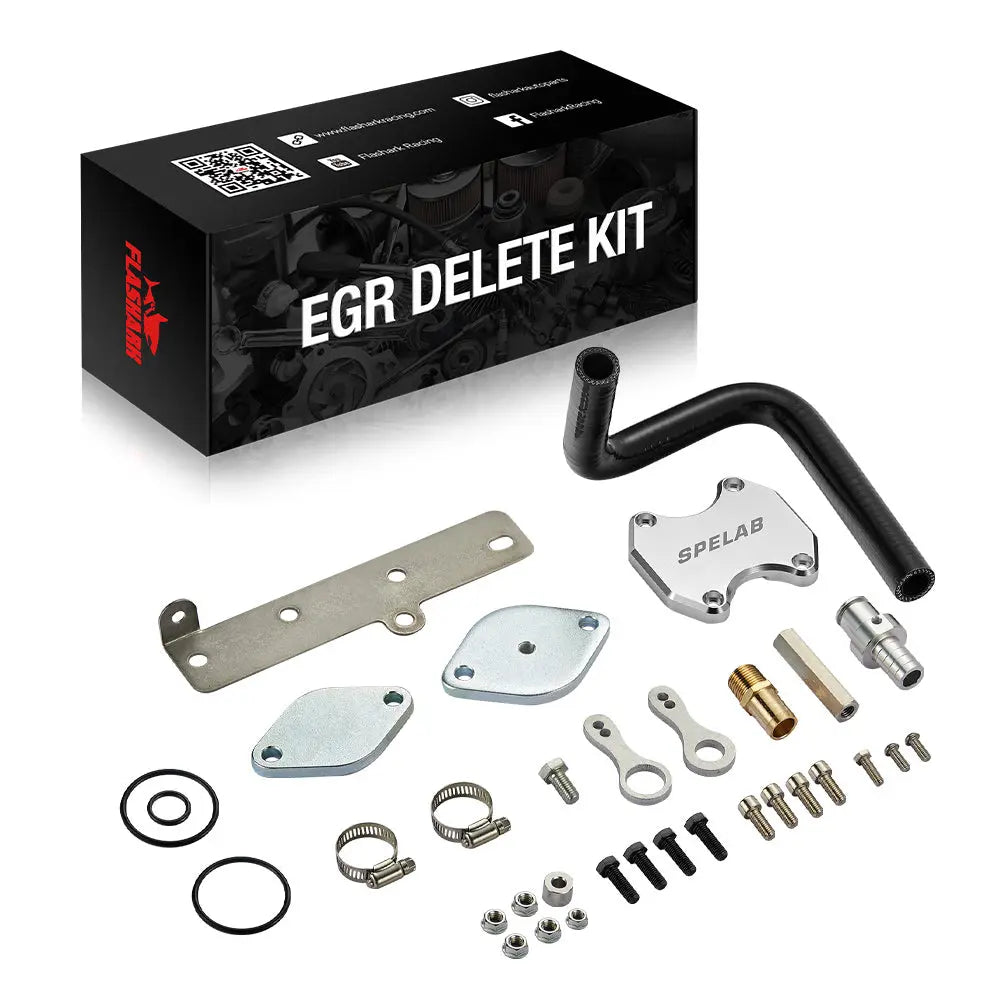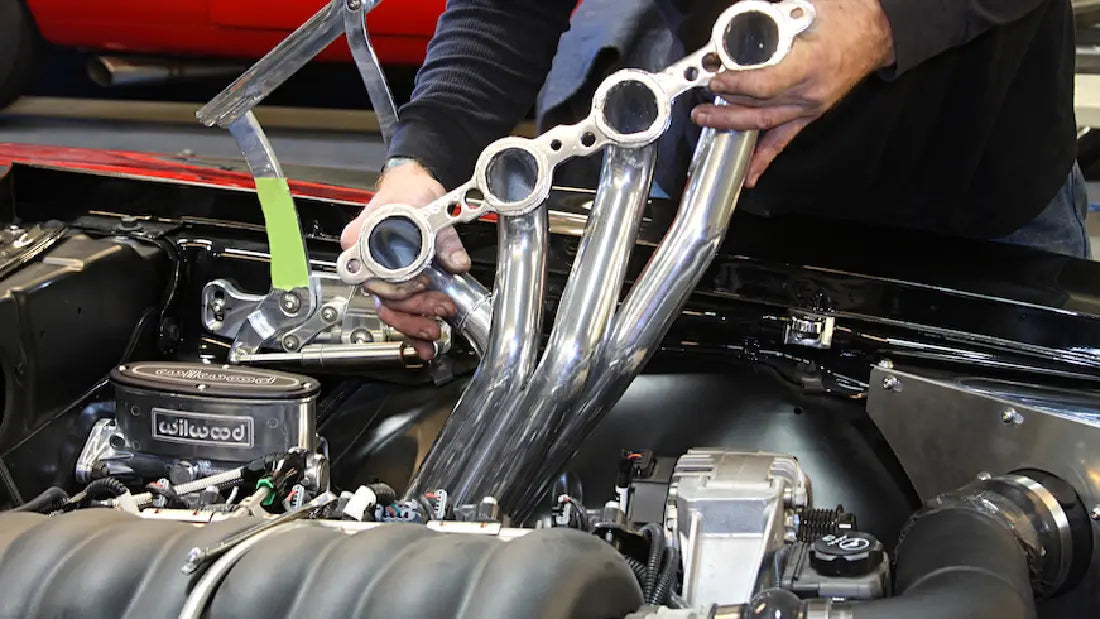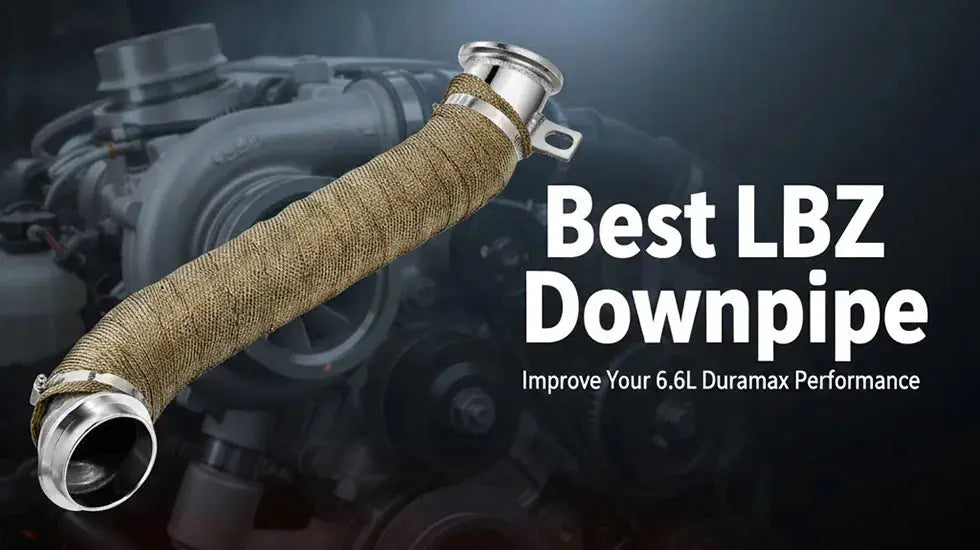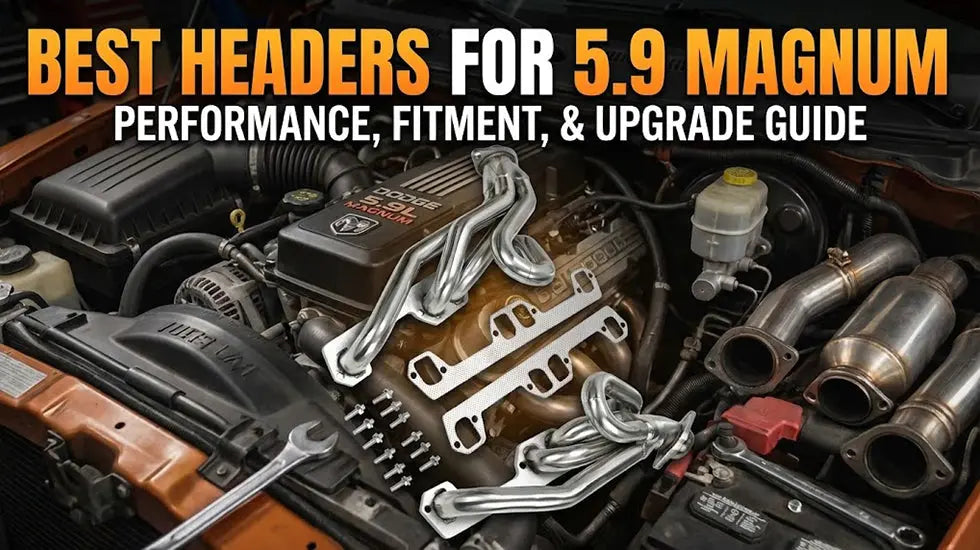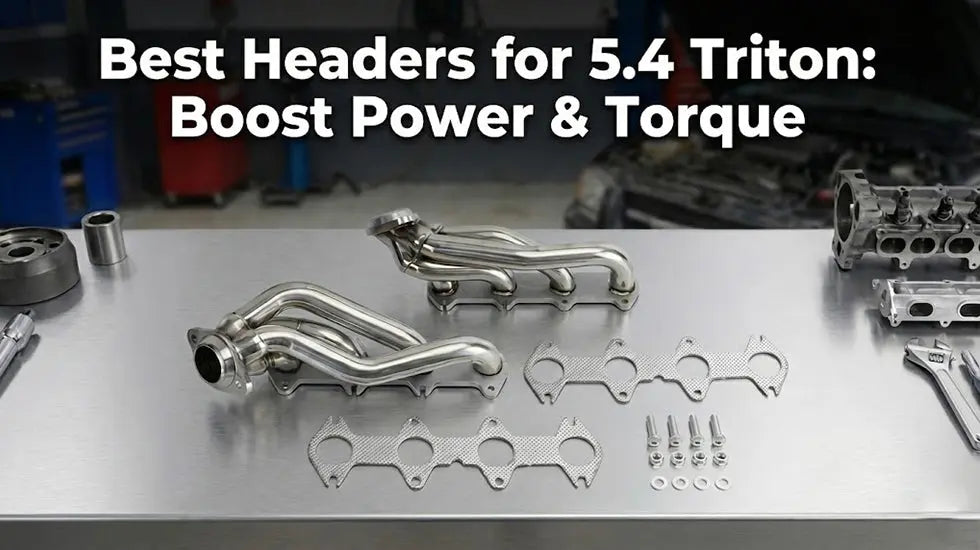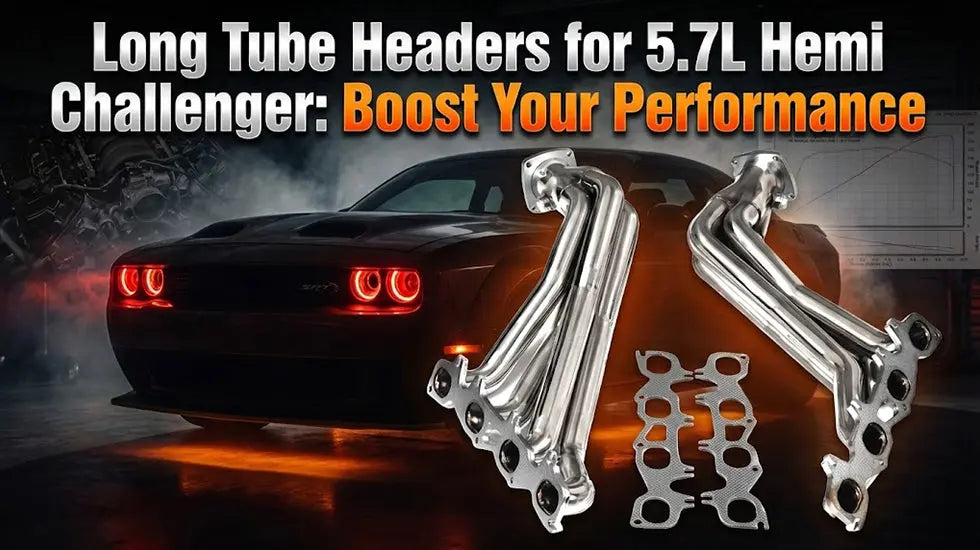When considering vehicle exhaust modifications, one of the most common questions drivers ask is whether a Cat-Back exhaust sounds louder than an Axle-Back exhaust. Both systems are designed to alter the exhaust sound and improve performance, but they do so in very different ways. This article will explore the differences between Cat-Back and Axle-Back exhaust systems and help you understand which is likely to make your car sound louder.
Understanding the Basics of Cat-Back and Axle-Back Exhaust Systems
Before diving into the sound differences, it’s important to understand the basics of these two exhaust systems.
Cat-Back System
A Cat-Back exhaust system replaces the section of the exhaust system from the catalytic converter to the exhaust tip. This full-system replacement often includes pipes, mufflers, and sometimes a resonator. Because this system addresses a larger portion of the exhaust flow, it leads to better exhaust gas evacuation, resulting in enhanced engine performance and a noticeable shift in sound. Typically, a Cat-Back system creates a deeper, more aggressive exhaust note.
Axle-Back System
An Axle-Back exhaust system, by contrast, replaces only the rear section of the exhaust, starting after the rear axle. It includes the muffler and tailpipe, but does not affect components like the catalytic converter. While this modification can alter the car’s exhaust sound, it has a more subtle effect on overall sound compared to the Cat-Back system. Since it focuses only on the tail end, the performance impact is also less dramatic.
How Does a Cat-Back System Affect Exhaust Sound?
A Cat-Back exhaust system is known for its significant influence on a vehicle’s sound. Here’s how it changes the auditory experience:

Sound Impact
A Cat-Back system typically produces a louder, more aggressive sound than an Axle-Back system. Replacing a larger portion of the exhaust system allows for better airflow, resulting in a more pronounced tone. At low speeds, this system generates a deep rumble. At high speeds or higher RPMs, the exhaust note sharpens and intensifies, creating a more dynamic sound.
Performance Gains
The improvements in sound from a Cat-Back system are closely tied to performance. The better exhaust flow can result in an increase in horsepower and torque, which enhances the car's overall performance. As the engine expels gases more efficiently, you’ll also notice the exhaust volume and tone becoming more intense as the engine works harder.
Frequency Range
A Cat-Back exhaust provides a broader sound frequency range compared to an Axle-Back system. It’s capable of producing both low-end growls and high-pitched shrieks, giving the car a fuller, more layered sound profile. This is why many enthusiasts prefer Cat-Back systems for a more complex and engaging auditory experience.
How Does an Axle-Back System Affect Exhaust Sound?
While an Axle-Back exhaust system doesn’t modify the sound as drastically as a Cat-Back system, it still makes some noticeable changes. Here’s a closer look at how it affects the sound:

Sound Impact
The Axle-Back system changes the tone primarily from the rear of the vehicle, where the muffler and tailpipe are located. This type of exhaust system tends to increase sound volume and sharpness, but it does not create the deep, resonant tones typical of a Cat-Back system. Instead, it results in a more direct, aggressive sound at the tailpipe, especially noticeable when accelerating.
Subtle Sound Changes
Since the Axle-Back only alters the rear section of the exhaust system, the sound change is more focused. It’s common to hear a louder, sharper exhaust note, but the car won’t have the fuller, dynamic sound of a Cat-Back system. Therefore, while the Axle-Back system does make a vehicle sound louder, the tonal range is more limited.
Limited Performance Impact
Unlike a Cat-Back system, which can boost engine performance due to improved exhaust flow, the Axle-Back system typically doesn’t result in significant performance gains. This system has a more limited impact on the vehicle's overall efficiency, as it doesn’t address the larger exhaust flow path.
Comparison of Sound Differences: Cat-Back vs. Axle-Back
Let’s break down the key differences in sound between the Cat-Back and Axle-Back exhaust systems:
Loudness
The Cat-Back system is generally louder than the Axle-Back system. This is because the Cat-Back system replaces more of the exhaust components, improving airflow and amplifying sound. The Axle-Back system primarily affects the tailpipe, resulting in a louder exhaust note, but it lacks the depth and intensity produced by the Cat-Back system.
Frequency Range
A Cat-Back exhaust delivers a broader range of frequencies. The system enhances low-end rumble and increases high-frequency sounds at higher RPMs. In contrast, the Axle-Back system mostly focuses on the tailpipe sound, producing a sharper tone but lacking the fuller sound profile that the Cat-Back system provides.
Real-World Observations
Forum discussions and user experiences confirm that a Cat-Back system generally produces a louder, more dynamic exhaust note compared to an Axle-Back system. Users report that the Cat-Back system delivers a more noticeable sound improvement, with a richer, more aggressive tone.
Which Exhaust System is Right for You?
Choosing between an Axle-Back and a Cat-Back exhaust system depends on your specific goals, whether you're after a louder sound, better performance, or a more affordable option.
For Sound Enthusiasts
If you're looking for a significant sound upgrade, the Cat-Back system is the best choice. It will provide a louder, more aggressive exhaust note, especially at higher RPMs. The Cat-Back system’s ability to produce a fuller frequency range makes it ideal for drivers who want a dynamic and powerful exhaust sound.
For Budget-Conscious Buyers
If you're looking to enhance the sound without spending as much money, an Axle-Back system may be the better option. While it won't provide the same dramatic increase in sound or performance as a Cat-Back system, it can still create a more aggressive exhaust tone at the tailpipe and is typically more affordable.
Considerations for Performance
For those who care about both sound and performance, the Cat-Back system is the better choice. With improved exhaust flow, the Cat-Back system can provide measurable performance gains, in addition to a louder and more dynamic sound. On the other hand, if performance isn't your top priority, the Axle-Back system might suffice for a modest sound upgrade.
Conclusion: Sound and Performance Impact
In conclusion, a Cat-Back exhaust system is generally louder and offers a broader, more dynamic sound compared to an Axle-Back exhaust system. By replacing a larger portion of the exhaust, the Cat-Back system enhances exhaust flow, which results in both louder sound and better engine performance. The Axle-Back system, while still increasing sound, does so with more limited changes, particularly focusing on the rear exhaust tone.
For those seeking a major sound transformation and better performance, the Cat-Back system is the ideal choice. However, if you’re looking for a more budget-friendly option with a subtle increase in exhaust note, the Axle-Back system is worth considering.


